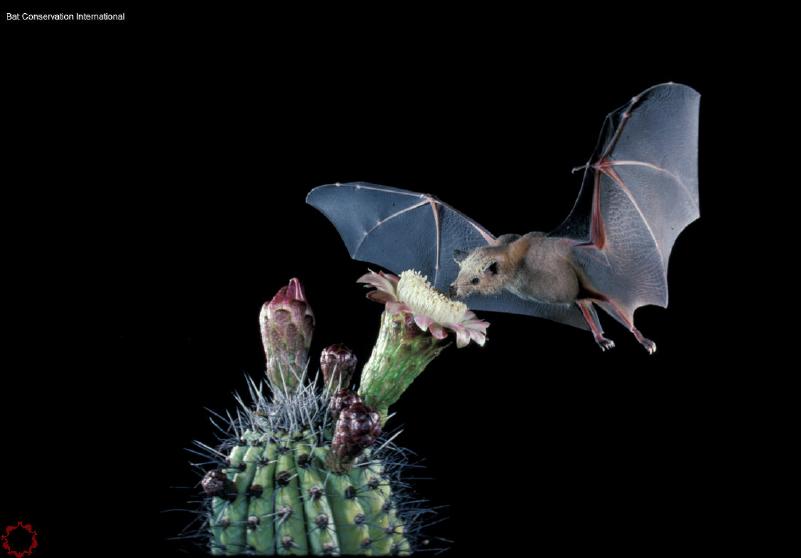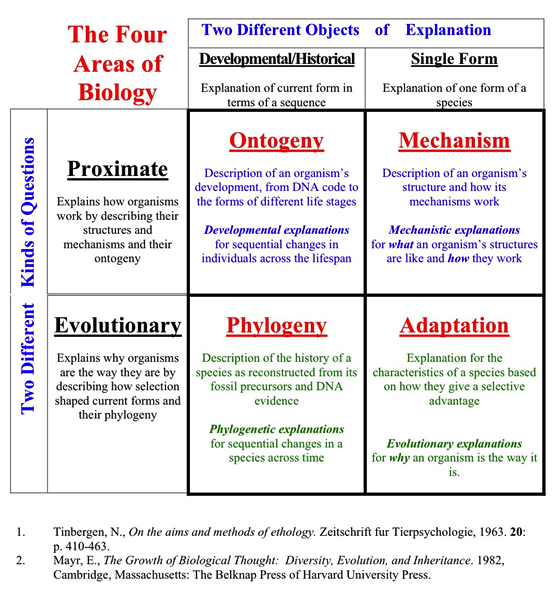Folivory in Fruit Eating Bats
Biology 342 Fall 2011
Authors: Monica Mao and Nikki Valentine
| Home | Phylogeny | Ontogeny | Mechanism | Adaptive Value | References | Course Home |
Introduction
Old World fruit bats make up the suborder Megachiroptera, which consists of the single family Pteropodidae. These bats are usually either frugivorous or nectarivorous meaning that they feed primarily on fruit and nectar. These bats live in the trees and caves in the forests of Africa, eastern Mediterranean, Asia, Australia, and western Pacific islands. Although fruit bats have always been known to frequently visit plants within their habitats, researchers have recently been discovering that these bats also feed on the plant leaves, also known as the practice of folivory (8).

The bat Leptonycteris curasoae obtaining nectar from an organ pipe cactus flower (11).
Because most Megachiroptera bats cannot echolocate like those of the Microchiroptera suborder, insects are not a main food source. Instead, Megachiroptera bats obtain nutrients through fruit and flower nectar, but the question of whether these food sources provide enough protein is unknown. Current research suggests that frugivorous bats may eat leaves to make up for a lack of protein and other nutrients not found in fruit (2).

The late ethologist Nikolaas Tinbergen developed “4 questions,” or categories that allow us to comprehensively analyze a single animal behavior. These four areas of thought are applied on this website in order to anaylze the phenomenon of folivory in bats.
Phlyogeny addresses the behavior in terms of ancestral links.
Ontogeny is the development of the behavior over an organism’s life.
Mechanism analyzes how a behavior is performed physically.
Adaption is the purpose a behavior has come to serve an organism in its modern environment.
Phylogeny and Adaptation are ultimate explanations, meaning that they tell us about a behavior's long term, historical development and purpose. Ontogeny and Mechanism are proximate explanations because they organize information about a behavior's immediate purpose during the animal's lifespan. The figure to the right maps out Tinbergen's Four Areas of Biology (12).